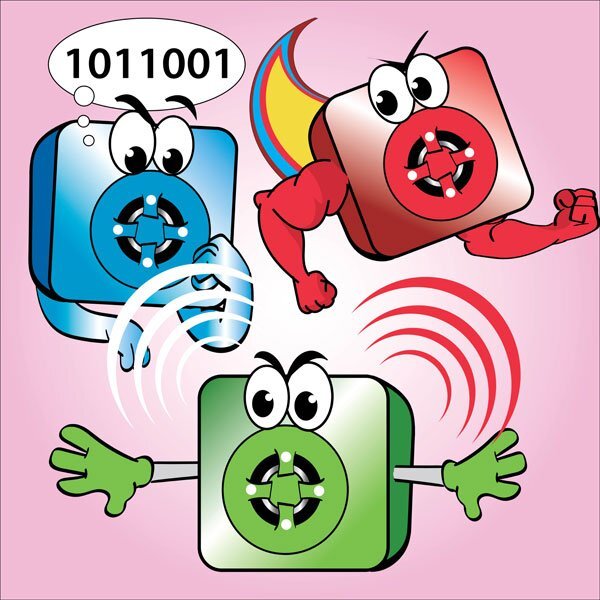Lesson Modules
Teaching Tips:
KT06 and Additional Think Cubelets in the Classroom, 40 minutes activity
This is a continuation of students constructing robots using Cubelets. By snapping together magnetic blocks that represent the Sense and Act Cubelets in different configurations students can explore the input‐output relationship robots use to react to their environment. In this activity, students explore the think component of robots using Think Cubelets to manipulate the information passing between their senses and actions.
For each class/group, this lesson plan includes 2 parts:
Each segment is suggested to last 20 minutes for a total of 40 minutes of class time.
- A hands-on exploration of the Think function of a robot
- An extended robotics challenge
Each segment is suggested to last for 20 minutes, for a total of 40 minutes of class time.
Re‐introduce students to the basics of robotics ‐ Robots sense, think and act
Q: What did we say about what robots do in the last class? Robots do three things - can you name them?
A: Robots sense, think, and act.
Q: Can you think of any robots in the movies or on TV? What are the inputs and outputs (senses and reactions) they might be use?
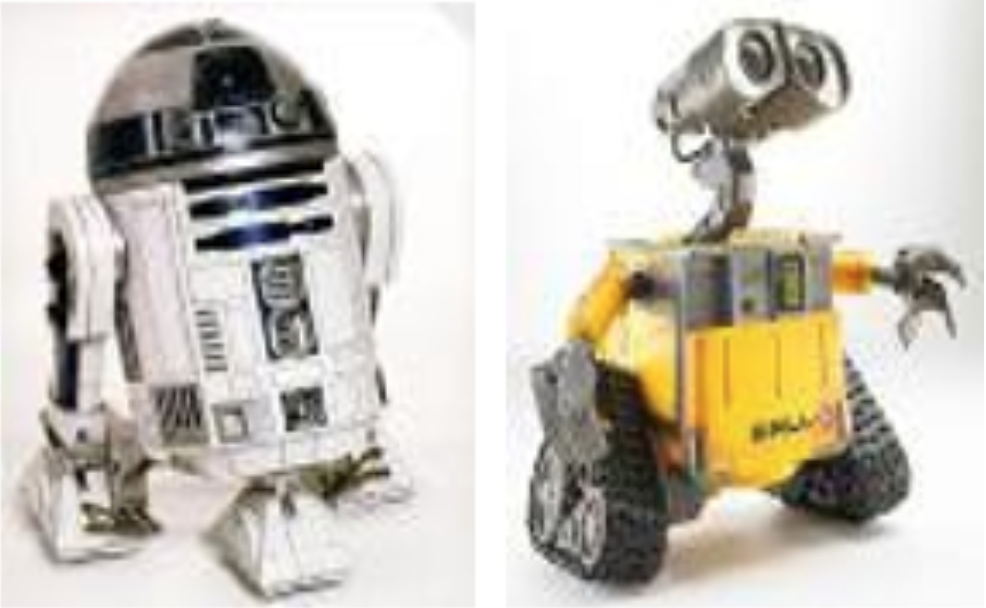
The basics of robotics

Teaching Tips:
Materials: KT06 kits with Passive Cubes included, as well as Blocker, and Inverse Cubelets groups of 14 students using each kit.
These lesson plans have suggested age levels, but it is possible to use the younger grade activities as a ramp up to older grades; e.g. use the 6 ‐ 9-year-old activities to ramp up and extend a lesson plan for a group of 10‐12-year-old students. Similarly, the activities suggested for older students can become a way to expand on challenges presented to younger learners if there is time and interest.
A hands‐on opportunity for students to understand how the Think component of a robot changes information sent from the sense to the act component.
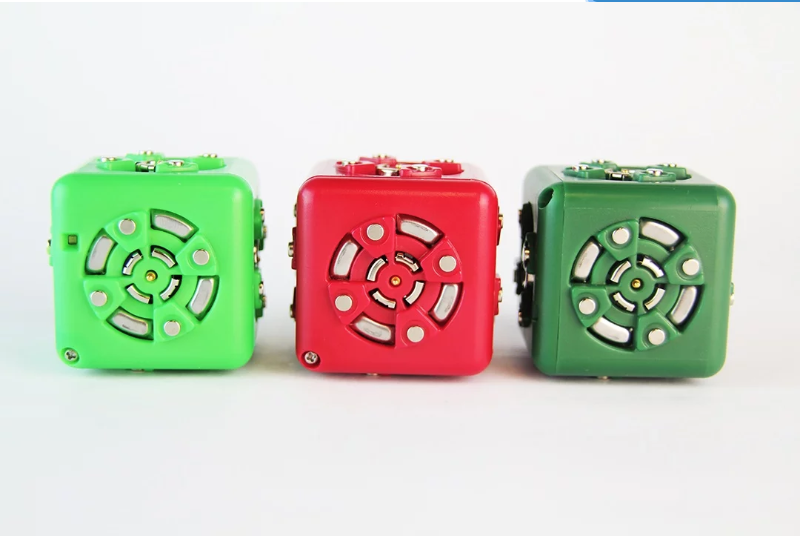
Tell the class: “In the last class we used Sense Cubelets and Action Cubelets to build robots that drove around and lit up. Today we’re going to make our robots a little smarter by using Think Cubelets with the senses and actions. Let’s see how this changes our robots.”
Use the Battery, Brightness, Passive and Flashlight. “We built this robot before, but without the green Think Cubelet. Test out this Think component by putting it between the sense and the action ‐ what do you think this Cube is doing to the information that is going from the Brightness sense to the Flashlight Action? Is it getting the light to shine brighter or dimmer? Is there any difference? Has the Think component changed how information goes from this sense to the action ‐ when does the light get bright? When there’s a lot of light on the black Brightness sense or a little light? What does that mean?”
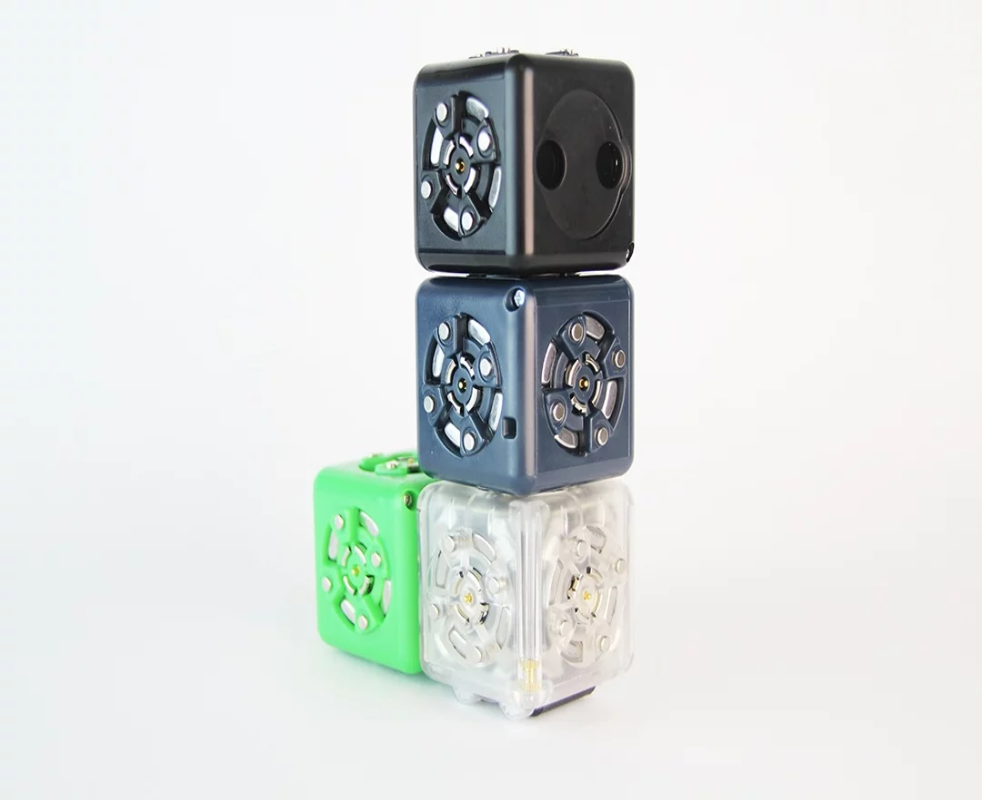
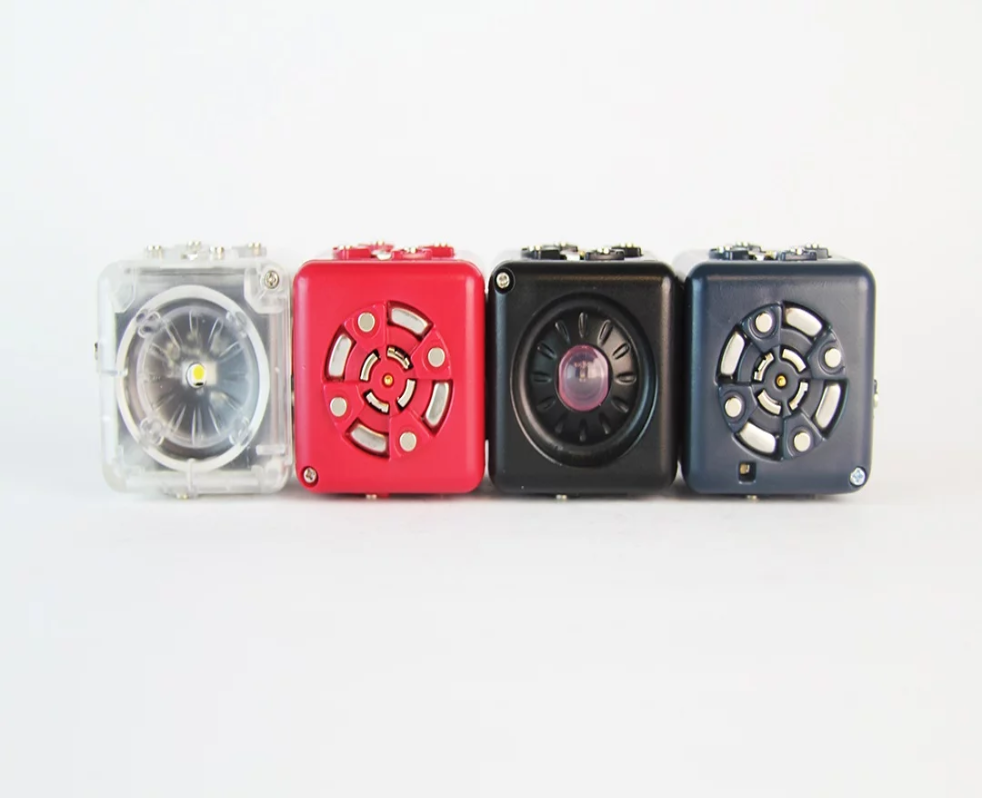
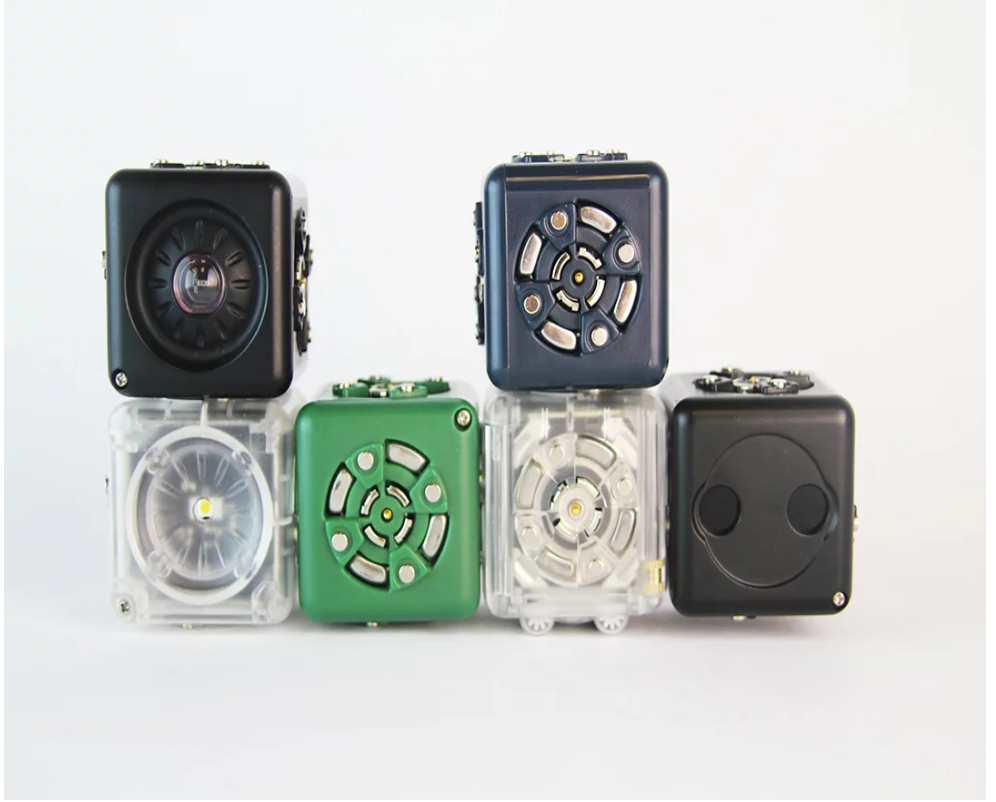
- Guide the students into the final discussion:
What do you think this Cube is doing?
Is it getting the light to be brighter, dimmer, or any different?
Has the Think component changed how information goes from this sense to the action?
When does the light get bright?
When there’s a lot of light on the black Brightness sense or a little light?
What does that mean?

Today we’re using Think Cubelets with the senses and actions. Let’s see how this changes our robots.
Test out this Think component by putting it between the sense and the action.



Teaching Tips:
Materials: KT06 kits, groups of 14 students using each kit as well as the additional Think Cubelets.
This is an opportunity for students to design their own robot using the Think components of robotics. Students get to test their understanding of the Sense, Think, and Act components of a robot by creating their own challenges and proposing designs to meet them.
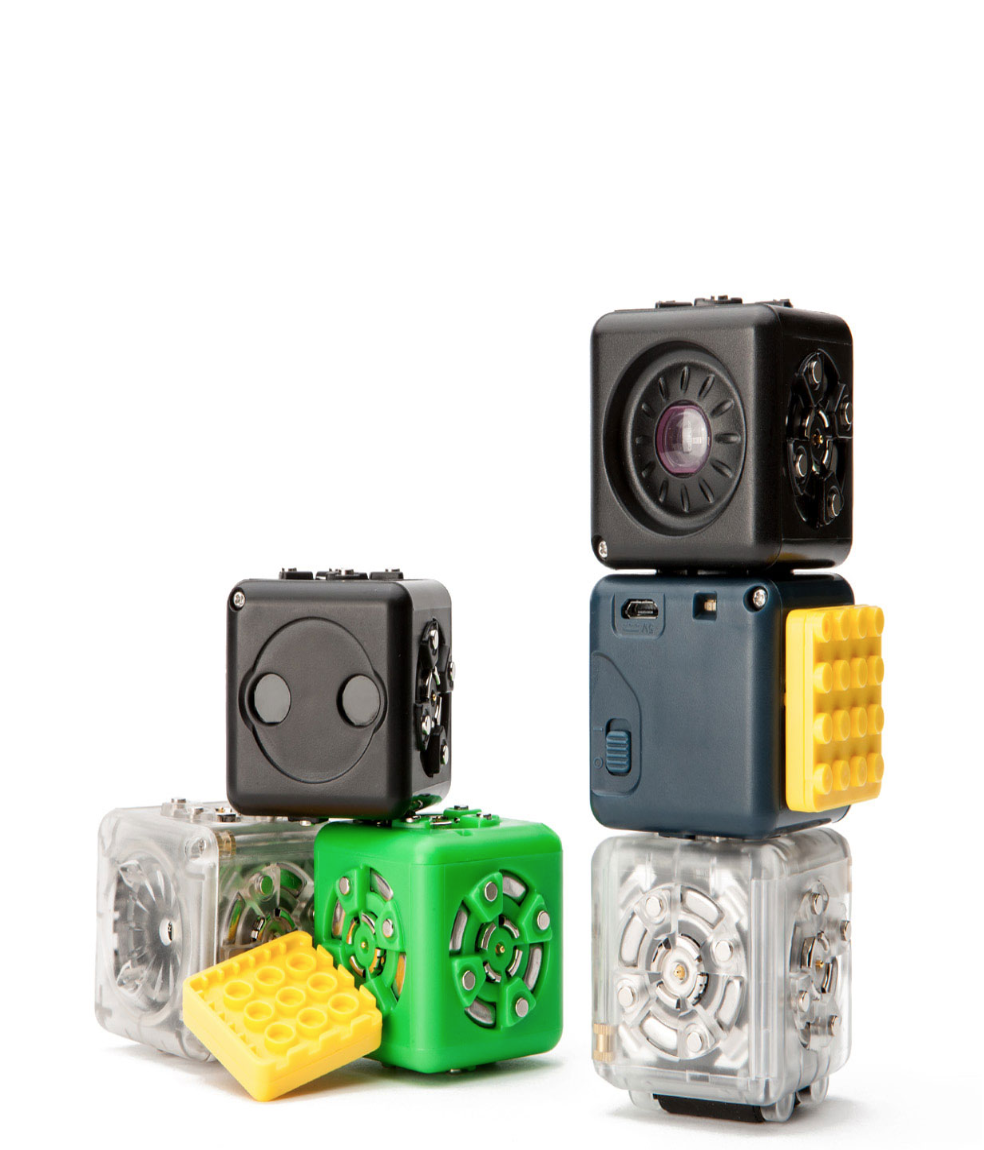
Using the 6 cubes in your box, what is the coolest robot you can make? What does it do? Can it be used for anything?
This is an opportunity to design your own robot using the Think components of robotics. You will get to test your understanding of the Sense, Think, and Act components of a robot by creating your own challenges and proposing designs to meet them.

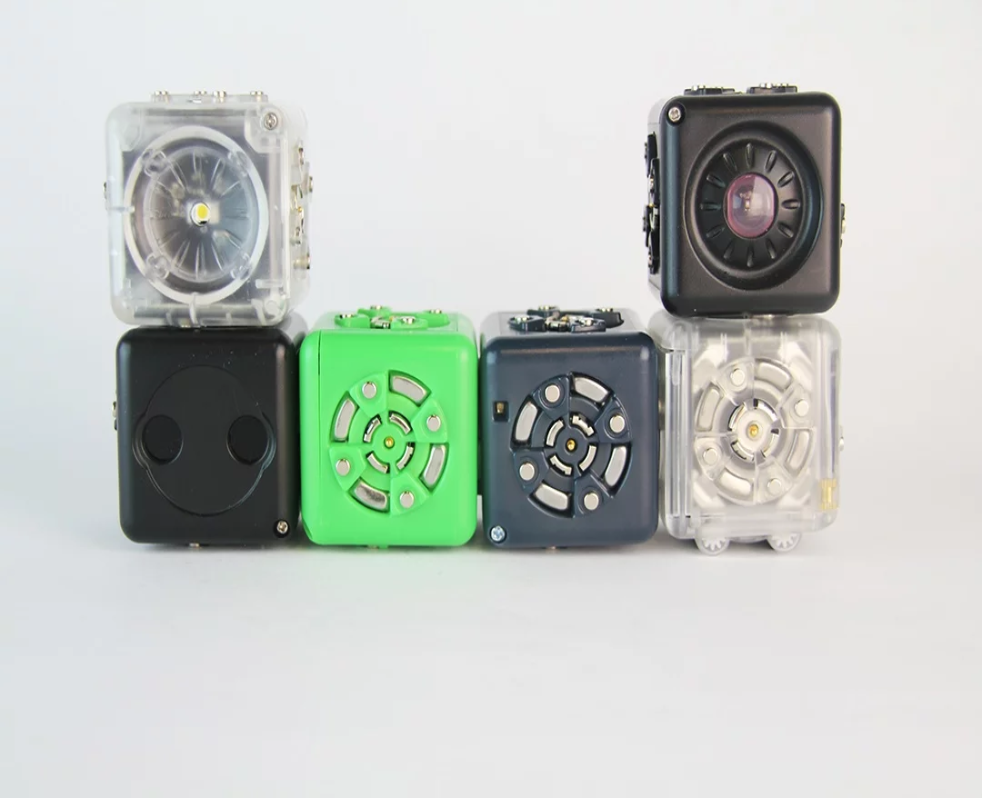
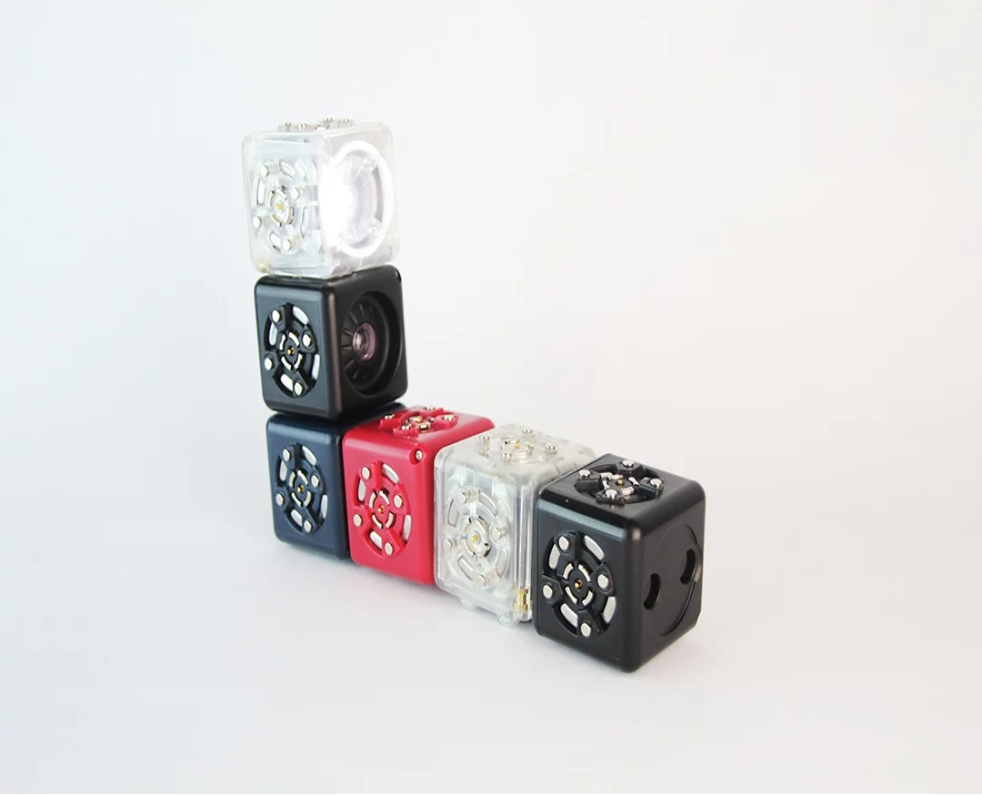
Teaching Tips:
Have the students record their robot in action and narrate what they are doing and why. This way they can show their friends and family. And they can have a record for themselves.
Share the students' answers with the class. If time is allowed, have a quick discussion about what went well and what could have been done differently or better.
Don’t worry, this isn’t for a grade, it’s just so your teacher can check the classes’ understanding.
- Think
- Act
- Sense
